Premium Only Content
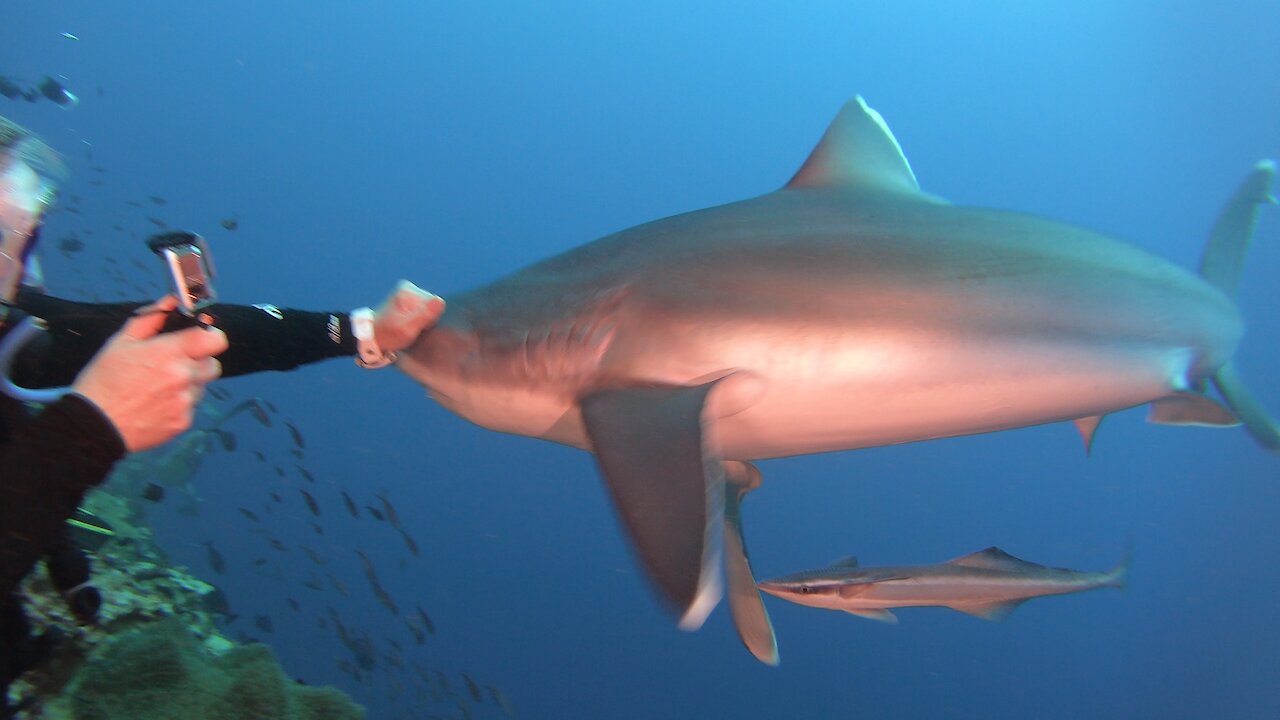
Fearless scuba diver fends off aggressive shark with her bare fist
Scuba diving opens doors to mysterious and beautiful worlds filled with fascinating and, sometimes intimidating creatures. Sharks are among the most fascinating, as well as the most misunderstood. They are the subject of myths and misinformation, often painting them as villains. While they can pose a threat to humans, it is rare that they chose to do so, and often, encounters that result in injury are the result of improper behavior by the humans involved.
These scuba divers were witnessing a controlled feeding of silvertip reef sharks in Papua New Guinea for the purpose of studying and photographing these incredible animals. Tour operations will occasionally use bait to lure the sharks close for observation. While this practice is controversial in some ways, it sometimes accomplishes some very positive things. It allows for closer study and inspection of sharks which provides us with very valuable information about them.
Sharks demonstrate the ability to distinguish between food and people, and most species will not attack humans except in cases of mistaken identity. It is advisable, however, to make sure that limbs are not presented in a way that might resemble a fish. Sitting still, remaining in a group, and avoiding quick or panicky looking movements are all basic precautions. Letting a silvertip reef shark get too close, or bump a diver, without being challenged, is also inadvisable. These behaviors may be curiosity-based, or they might be the start of aggressive behavior.
These scuba divers had perched themselves on a rocky ledge where they could focus their attention to the front. Kristy, a seasoned diver with a considerable knowledge of sharks, was holding a small action camera as she watched the sharks swimming past. She had no food and was not positioned close to the bait container. But a smaller fish grabbed a chunk of the bait and dragged it near her. Nearby jacks devoured the bait, but the small particles and scent were close to Kristy. A circling silvertip smelled the blood and it turned abruptly, heading right at Kristy's face. Having no other option, she punched the shark on the snout as it almost reached her face. This physical contact could not possibly have harmed the shark or caused any pain, but it did startle the beast which turned and abruptly and swam in another direction. It circled around and continued looking for food, but it kept a respectful distance from that point on.
Kristy appeared to be unconcerned for a few moments until the gravity of the situation sank in. She faced the diver beside her who had recorded the incident. Her eyes were very wide as she spoke into her regulator: "Holy s*@#!". Even through the water, her words can clearly be heard. It's obvious that she was surprised with the shark's aggressive approach, as well as her own response to it.
Kristy later commented that she was not actually afraid of the shark and she compared its behavior to that of a dog exhibiting dominant "test" aggression. Anyone who understands sharks would probably agree that this kind of approach is somewhat "aggressive" in nature, but that it was not an attack and that the shark did not appear to be trying to bite at that time. Unchecked though, things might have escalated.
Understanding sharks is the first step in lessening our fear of them. When we can reduce, or eliminate that fear, we can begin to respect them more. We can also take a better look at their place in our oceans and the vital role that they play in the ecosystems beneath the waves. Quite simply, without sharks, we would not survive. Excessive harvesting, finning, and destruction of habitat must be reduced before they face extinction and we follow close behind.
-
 2:34
2:34
WildCreatures
10 days ago $0.31 earnedHow you see your world is more important than you think
3.09K7 -
 0:42
0:42
WildCreatures
5 years ago $31.69 earnedMassive whale shark swims directly under surprised scuba diver
13.5K5 -
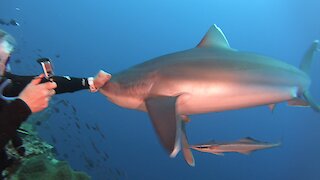 0:28
0:28
WildCreatures
5 years ago $19.30 earnedShark comes too close to scuba diver, gets punched on the snout
59.1K -
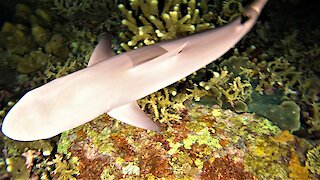 0:41
0:41
WildCreatures
5 years ago $3.87 earnedBaby shark closely investigate scuba divers
4.3K2 -
 0:53
0:53
WildCreatures
5 years ago $5.84 earnedScuba diver has close-up experience with beautiful stingray
4215 -
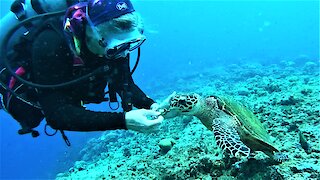 1:24
1:24
WildCreatures
5 years ago $2.99 earnedScuba diver melts after friendly wild sea turtle captures her heart
12.4K -
 1:34
1:34
WildCreatures
5 years ago $28.96 earnedScuba Diver Has Incredible Moment With Two Critically Endangered Sea Turtles
1.54K4 -
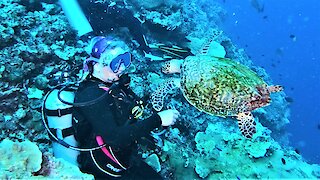 0:45
0:45
WildCreatures
5 years ago $12.85 earnedBrave sea turtle shows up to visit scuba divers at shark dive
2.66K2 -
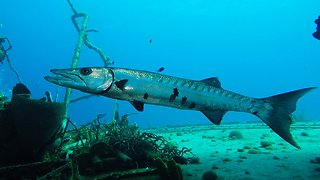 0:42
0:42
WildCreatures
5 years ago $5.80 earnedGiant barracuda startles scuba diver on sunken Russian warship
5195 -
 0:13
0:13
ViralHog
4 years ago $0.11 earnedScuba Diver Dances With Shark
526